“A stitch in time saves nine”, fits perfectly for car maintenance. Major breakdowns of automobiles can be avoided if their preventive maintenance is carried out timely.
One such simple activity is to change oil in car, which if done periodically can improve your car’s life drastically.
You don’t even need to take your car to a mechanic to change car oil and filter. It can simply be done by yourself too!
It’s a great way to save some bucks and more importantly, get in touch with your machine. Just follow these steps and learn how to change oil and oil filter in car:
Contents (Jump to Topic)
1. Prepare Supplies
First, check the type and amount of oil required. Each car is different and uses a different type of oil depending upon its engine.
Always refer to your owner’s manual to find the correct specifications of recommended oil as defined by American Petroleum Institute (API). Accordingly, buy required amount of oil.
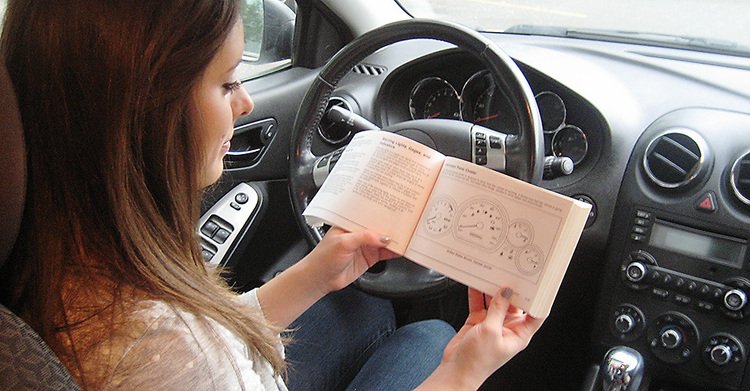
Image Credit: Cenex
Get together your wrenches, filter, and other supplies. Apart from oil, you’ll need an oil-filter (again, check the recommended type), wrenches for removing drain plug and oil-filter, funnel, a pan to collect drained oil and gloves.
For raising the car and gaining access to the ventral portion, you’ll need a floor jack with safety stands (different than the one that is supplied with the car, which is quite weak)
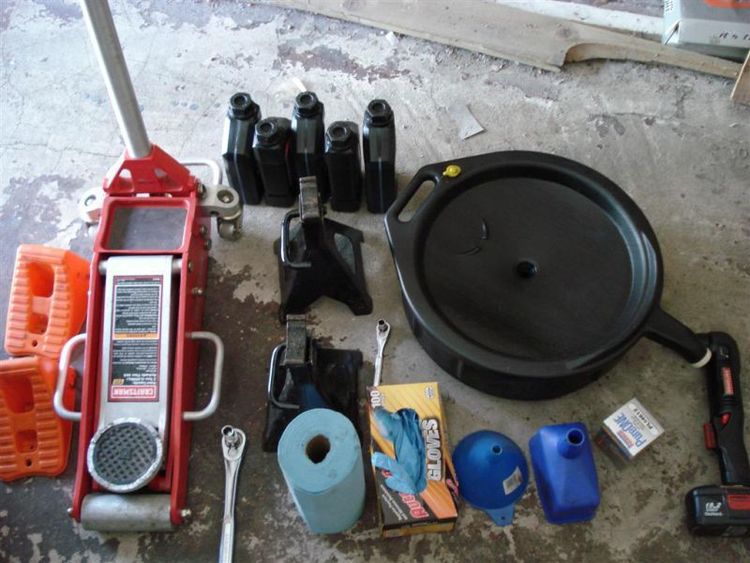
Image Credit: Chicagoz
Also Read: What Causes Car Overheating and how it can be Fixed
2. Prepare the vehicle
Ensure that the car is parked in a space which has level ground and workable area around it.
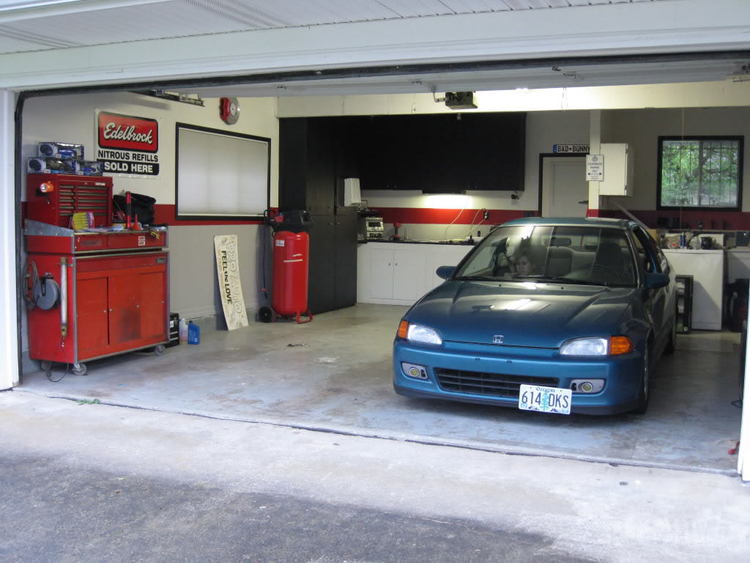
Image Credit: Pinterest
The oil needs to be warm (but not hot) for draining out easily. Just keep the engine idle for 10 minutes to warm the oil.

Image Credit: Wix
Jack-up the car for better access to the bottom side. Ensure car is in parking gear and hand-brake is on. For increased safety, put tire restraints to block the wheels which are on ground.
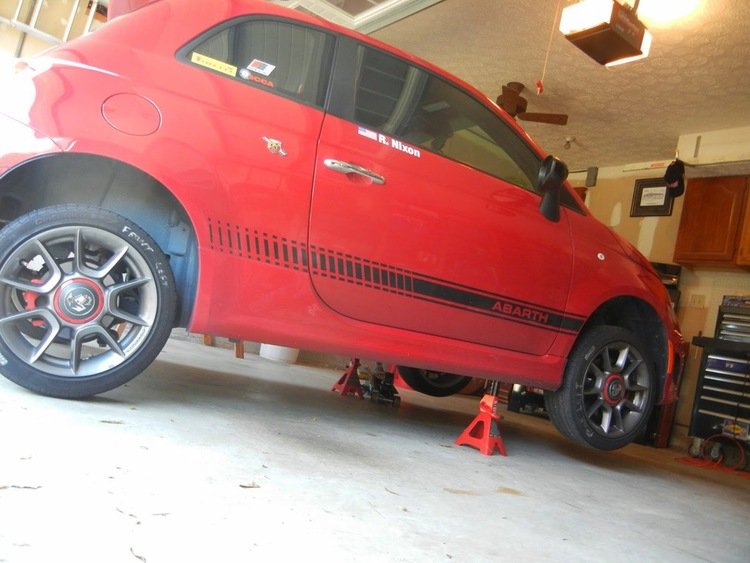
Image Credit: Blogspot
Some new cars come with aerodynamic under-covers, which must be removed first to locate the oil drain plug

Image Credit: F30driver
3. Drain used oil
Open the hood and locate the oil cap on top of the engine. Remove the cap.
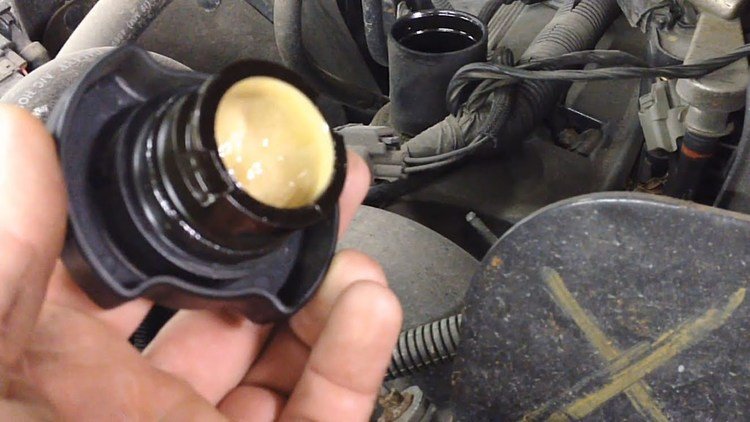
Image Credit: Youtube
Locate the engine oil drain plug, which is present below the engine. Make sure that it is not the transmission oil drain plug. Simply look for the exhaust pipe to check, as it is always connected to engine only.

Image Credit: 2carpros
Put your oil collector pan below the drain plug. Usually the oil stream comes out at an angle, so your pan’s location might require offsetting.
Image Credit: Docplayer
Loosen the oil plug using a crescent wrench. If paper or felt drain plug gasket is present, replace it with a fresh on but if it is a metal washer, then it might be re-used.
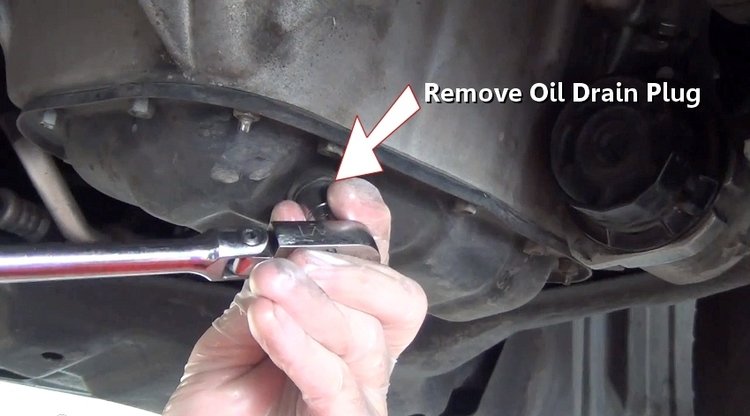
Image Credit: 2carpros
Tighten the drain plug once all the oil is drained out and washer is replaced.
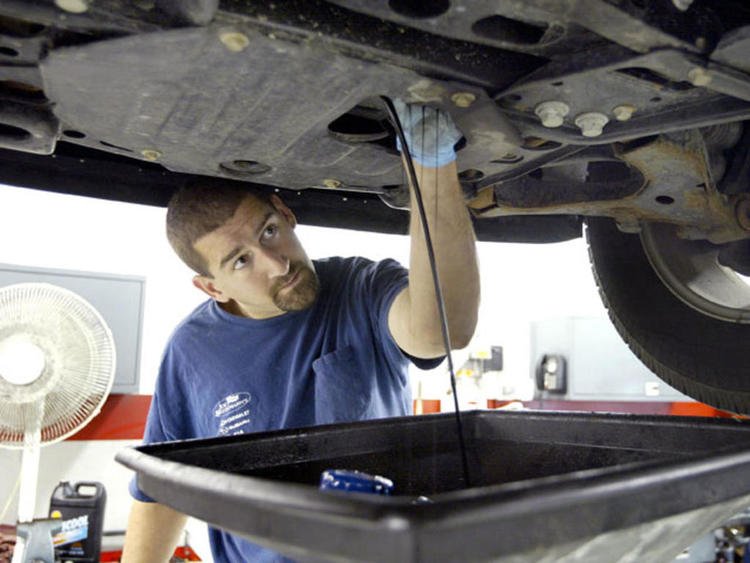
Image Credit: NBCsandiego
4. Replace oil filter
Now locate the filter assembly. This is a tricky step of our how to change oil filter tutorial because it can be present in front, back or side of the engine, depending upon the car type.
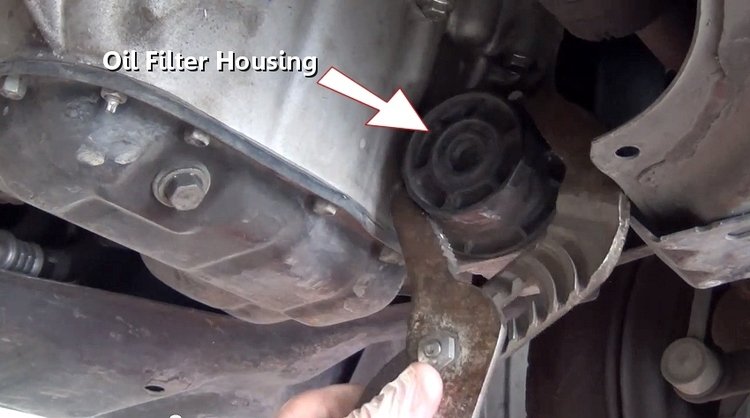
Image Credit: 2carpros
Prime the new filter with some fresh oil and smear some across the gasket of the filter too. This is not an essential step, but is highly recommended as a best practice.
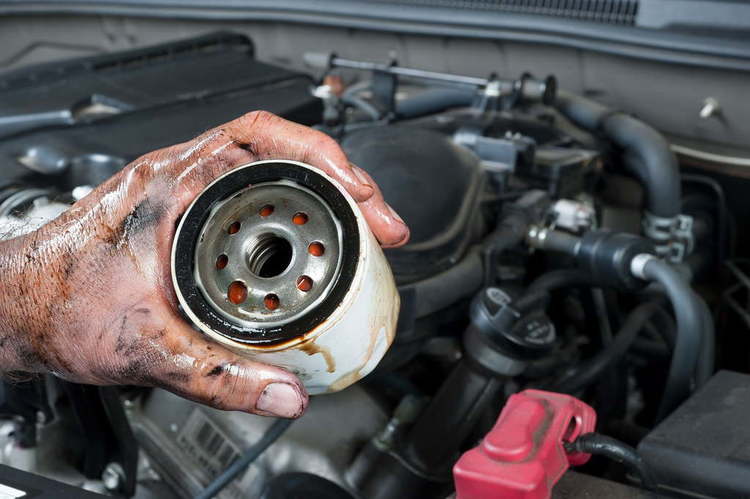
Image Credit: Digitaltrends
Place the oil collection pan beneath the assembly and unscrew the oil filter using your hand or a wrench.
Image Credit: Motoringassist
Put the new filter and carefully screw it as tightly as possible with a wrench. Don’t use a hammer to tighten it further, as it might damage the threads.
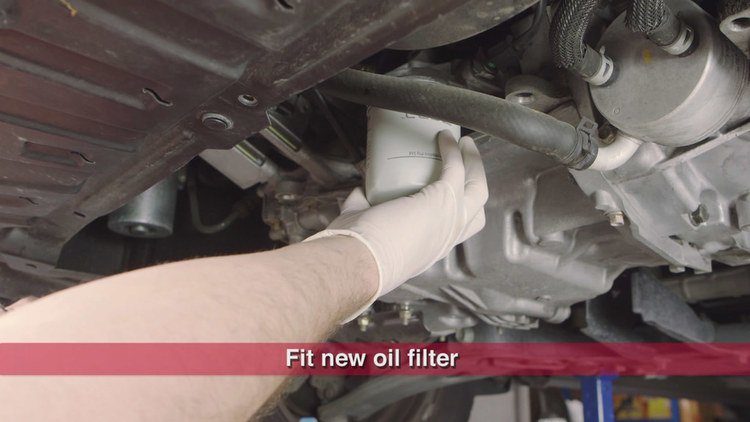
Image Credit: Supercheapauto
Remember that it is much easier to change oil filter when the oil is completely drained. Changing oil filter without draining oil is a difficult task and would result in small to large quantities of wasted oil, depending on your expertise.
5. Add fresh oil
We are finished with the major part of removing the old stuff. Now open the hood again and pour new oil in the fill hole. Ensure the quantity is correct and as mentioned in the owner’s manual.
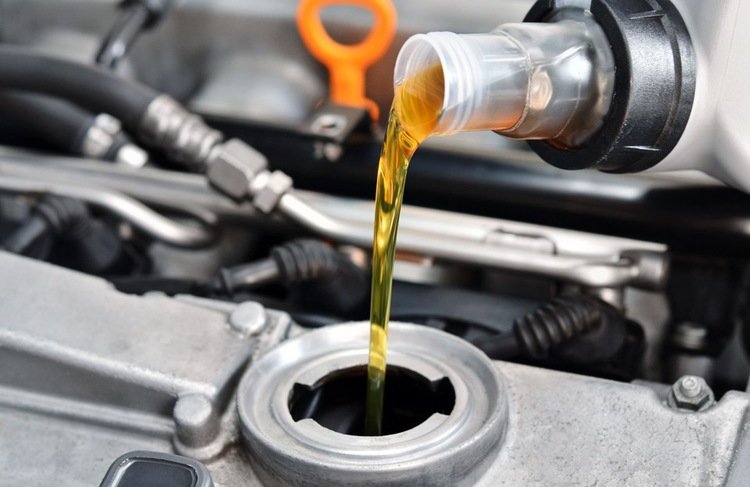
Image Credit: ADCD
Once oil is transferred, duly tighten the fill cap back to its original position.
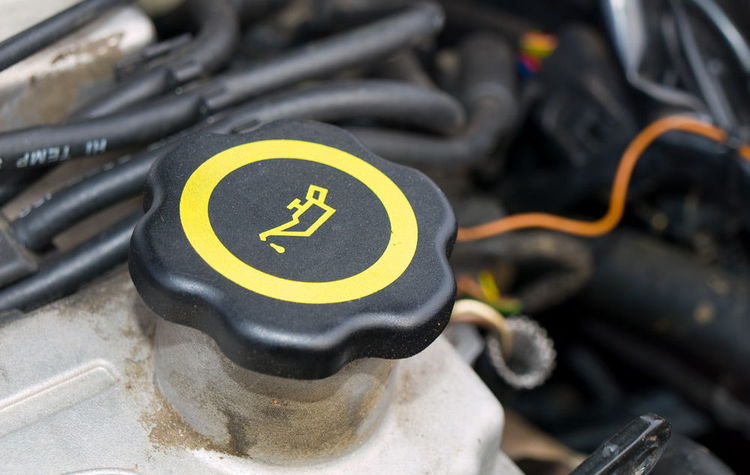
Image Credit: 365cars
At this point, start the engine for around a minute to get the pressure up. Check that the pressure light goes off. Check below the car for any oil leaks
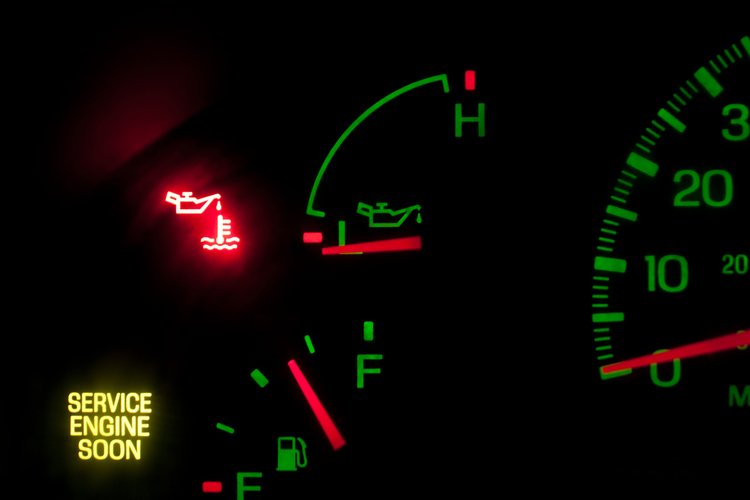
Image Credit: Cloudfront
Check engine oil levels by pulling out the dipstick and ensuring correct levels.
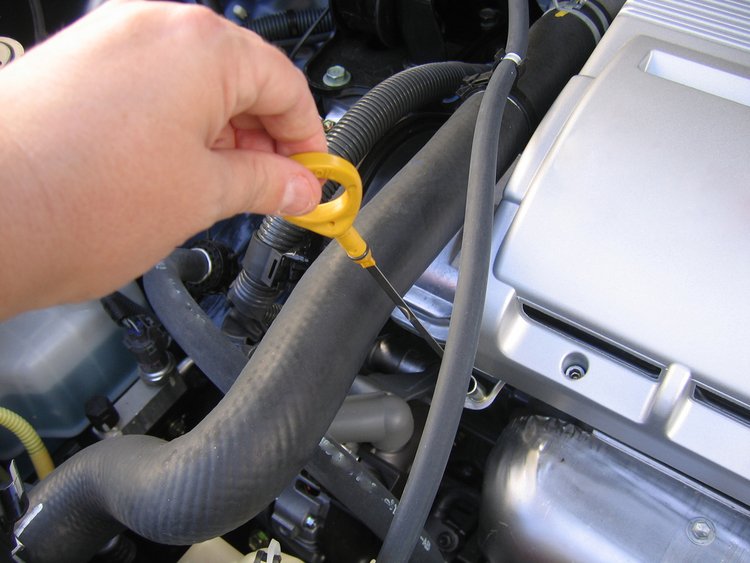
Image Credit: Breakerlink
6. Dispose used oil
Transfer the used oil from the pan to a can or drum, so that it can be shipped to a recycling facility. Just make sure that the box doesn’t contain any contaminant like antifreeze or pesticide.
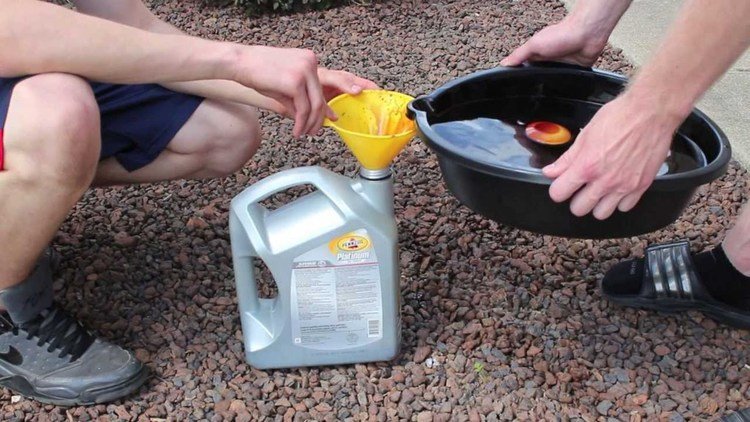
Image Credit: Youtube
Oil filters are recyclable too so you might want to save them as well

Image Credit: Folsom
Consider recycled oil next time you decide to change the oil in car by yourself.
Also Read: 25 Car Cleaning Hacks to keep your Car Spotless

Image Credit: Katuoil
This is the moment when you pat yourself on the back! You have successfully learnt how to change oil in car by yourself and can be proud of it.
If you are wondering why oil changing is very important for your car’s good health, here are some reasons that will convince you.
1. Prevents dirt and debris from depositing inside engine’s moving parts, hence allowing for a smoother movement of engine parts and increasing the life of engine too.
2. Besides increasing the engine’s life, its performance increases significantly with well-lubricated parts. Higher the quality of engine oil better is your car’s performance.
3. As the friction between piston and cylinder reduces, your car’s fuel economy (MPG) increases too.
4. Regular oil change ensures that car doesn’t undergo any break-down maintenance which can cost heavily.
5. Engine emissions are cleaner.
So, never miss your oil changing schedule and keep your car in a good condition.

